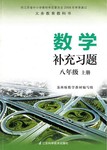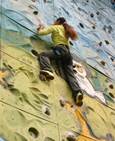
Parkour
The word “parkour” comes from a French phrase roughly translated as “military obstacle course(军事障碍课程).” At first glance parkour looks like an extreme sport, and it certainly has many of the same qualities of an extreme sport. However, it is considered by many tracers as more of an art and exercise, which allows for individual expression and also promotes inner strength and personal growth.
It introduces us to complete freedom from obstacles, and it is this freedom that makes parkour very appealing in strict control of modern society. It is a method that’s available to us at any time to deal with the obstacles facing us, both mental and physical. No obstacle, no barrier can stop the tracer;they continue moving forward in spite of, and in harmony with these.
While parkour does allow for a great deal of originality, there are certain methods commonly used when practicing it. The tracer chooses his/her own path through the environment to create unique and flowing movement, adapting to and using anything in this path. When many techniques or moves used to overcome obstacles are linked together in an efficient and continuous way, it is known as a “run.” If you see someone that looks like they’re running from the police, but there is no one running after, it’s probably parkour.
This idea of the chase represents and expresses the movement of parkour quite well. In fact, it is the form of movement that our ancient ancestors may have used to hunt for food, or escape from animals on the plains of Africa. In adapting instantly to whatever comes forth without thinking about it, we naturally flow over and around all obstacles. In practicing parkour, we are reviving and developing that ancient instinct(本能).
The attitude behind parkour also combines the mentality of a child at play. That unlimited imagination and energy combined with a complete ignoring of social practices epitomizes(成为…的缩影)the tracer. Others look at a rail or wall and see a barrier;we look at it and see a launch pad. And hey, let’s not forget that we do this because it’s fun! The world is our jungle gym, let’s go play!
1.The underlined word in paragraph 1 means
A.parkour participants B.fitness experts
C.sports psychologists D.extreme sports lovers
2.Paragraph 4 is written to .
A.show the way to develop ancient instinct
B.introduce the evolution of parkour
C.distinguish parkour from ancient instinct
D.explain the origin of parkour
3.What do we know about parkour according to the passage?
A.It is an activity dating back to ancient times.
B.People need to go past anything in the way while doing it.
C.It’s difficult to do without the aid of professional equipment.
D.People need military training before taking part in it.
4.People may show interest in parkour because .
A.they can get freed from routine activities and tasks
B.it helps them to do their job efficiently in future
C.they can develop both physically and mentally
D.it has its roots in their childhood experience
 同步练习河南大学出版社系列答案
同步练习河南大学出版社系列答案 同步练习西南师范大学出版社系列答案
同步练习西南师范大学出版社系列答案 补充习题江苏系列答案
补充习题江苏系列答案科目:高中英语 来源:天津市新华中学2010届高三第八次统练(英语) 题型:阅读理解
Parkour is a sport with the aim of moving from one point to another as smoothly, efficiently and quickly as possible using chiefly the abilities of the human body. It’s more similar to martial arts (武术) than to a sport. Parkour focuses on how any obstacle is dealt with, whether the obstacle is either physical or mental.
Inspiration for parkour came from the “Natural Method of Physical Culture” developed by Georges Hebert in the early twentieth century. French soldiers in Vietnam were inspired by Heber’s work and created what is now known as parcours du combatant (障碍训练课程). David Belle, who was introduced to this method by his father Raymond Belle, a Vietnamese soldier who had practiced it, had taken part in activities such as martial arts and gymnastics, and sought to apply his athletic skill in a manner that would have practical use in life.
After moving to Lisses, David Belle continued his journey with others. “From then on we developed,” says Sebastien Foucan, who helped to spread parkour, “and really the whole town was there for us; there for parkour.”
Over the years as devoted practitioners (实践者) improved their skills, their moves continued to grow in scale, so that building-to-building jumps and drops of over a storey(楼层) became common in media description, causing much misunderstanding on the nature of parkour.”
Although many practitioners say parkour isn’t an extreme sport, it does carry risk with it. The practice of running, jumping, and leaping from a variety of urban structures (roof tops, staircases, raised surfaces, walls, etc.) and landing on concrete, of course, carries the potential for injury. Some of the most common injuries include sprained (扭伤的) ankles and injuries to the knees.
According to one practitioner, “One of the biggest differences between parkour and other so-called ‘extreme’ sports is that it is not concerned only with physical skills, but also with one’s mental and spiritual pleasure.”
1. The second paragraph is mainly about _______.
A. Belle’s devotion to parkour B. the origin of parkour
C. the use of parkour during wartime D. the practical use of parkour in life
2. What do we know about David Belle?
A. He used to be a French soldier in Vietnam.
B. His attitude toward Hebert’s work was negative.
C. He and Foucan held different views on parkour.
D. He attempted to make full use of his athletic skill in life.
3. What do we infer from the passage?
A. The practitioners think parkour is worth the risk.
B. Parkour needs specially designed training places.
C. The practitioners are often blamed by the media.
D. Parkour was developed in the early twentieth century.
4. Parkour requires _______.
A. only the abilities of human body
B. move from one point to another
C. the ability to deal with mental problems
D. the ability to remove obstacles physically and mentally
5. According to the passage, which of the following is parkour?
A.  B.
B. 
C.  D.
D. 
查看答案和解析>>
科目:高中英语 来源:天津市2010届高三第八次统练(英语) 题型:阅读理解
Parkour is a sport with the aim of moving from one point to another as smoothly, efficiently and quickly as possible using chiefly the abilities of the human body. It’s more similar to martial arts (武术) than to a sport. Parkour focuses on how any obstacle is dealt with, whether the obstacle is either physical or mental.
Inspiration for parkour came from the “Natural Method of Physical Culture” developed by Georges Hebert in the early twentieth century. French soldiers in Vietnam were inspired by Heber’s work and created what is now known as parcours du combatant (障碍训练课程). David Belle, who was introduced to this method by his father Raymond Belle, a Vietnamese soldier who had practiced it, had taken part in activities such as martial arts and gymnastics, and sought to apply his athletic skill in a manner that would have practical use in life.
After moving to Lisses, David Belle continued his journey with others. “From then on we developed,” says Sebastien Foucan, who helped to spread parkour, “and really the whole town was there for us; there for parkour.”
Over the years as devoted practitioners (实践者) improved their skills, their moves continued to grow in scale, so that building-to-building jumps and drops of over a storey(楼层) became common in media description, causing much misunderstanding on the nature of parkour.”
Although many practitioners say parkour isn’t an extreme sport, it does carry risk with it. The practice of running, jumping, and leaping from a variety of urban structures (roof tops, staircases, raised surfaces, walls, etc.) and landing on concrete, of course, carries the potential for injury. Some of the most common injuries include sprained (扭伤的) ankles and injuries to the knees.
According to one practitioner, “One of the biggest differences between parkour and other so-called ‘extreme’ sports is that it is not concerned only with physical skills, but also with one’s mental and spiritual pleasure.”
1. The second paragraph is mainly about _______.
A. Belle’s devotion to parkour B. the origin of parkour
C. the use of parkour during wartime D. the practical use of parkour in life
2. What do we know about David Belle?
A. He used to be a French soldier in Vietnam.
B. His attitude toward Hebert’s work was negative.
C. He and Foucan held different views on parkour.
D. He attempted to make full use of his athletic skill in life.
3. What do we infer from the passage?
A. The practitioners think parkour is worth the risk.
B. Parkour needs specially designed training places.
C. The practitioners are often blamed by the media.
D. Parkour was developed in the early twentieth century.
4. Parkour requires _______.
A. only the abilities of human body
B. move from one point to another
C. the ability to deal with mental problems
D. the ability to remove obstacles physically and mentally
5. According to the passage, which of the following is parkour?
A.
 B.
B.

C.  D.
D. 
查看答案和解析>>
科目:高中英语 来源: 题型:阅读理解
Parkour is a sport with the aim of moving from one point to another as smoothly, efficiently and quickly as possible using chiefly the abilities of the human body. It’s more similar to martial arts (武术) than to a sport. Parkour focuses on how any obstacle is dealt with, whether the obstacle is either physical or mental.
Inspiration for parkour came from the “Natural Method of Physical Culture” developed by Georges Hebert in the early twentieth century. French soldiers in Vietnam were inspired by Heber’s work and created what is now known as parcours du combatant (障碍训练课程). David Belle, who was introduced to this method by his father Raymond Belle, a Vietnamese soldier who had practiced it, had taken part in activities such as martial arts and gymnastics, and sought to apply his athletic skill in a manner that would have practical use in life.
After moving to Lisses, David Belle continued his journey with others. “From then on we developed,” says Sebastien Foucan, who helped to spread parkour, “and really the whole town was there for us; there for parkour.”
Over the years as devoted practitioners (实践者) improved their skills, their moves continued to grow in scale, so that building-to-building jumps and drops of over a storey(楼层) became common in media description, causing much misunderstanding on the nature of parkour.”
Although many practitioners say parkour isn’t an extreme sport, it does carry risk with it. The practice of running, jumping, and leaping from a variety of urban structures (roof tops, staircases, raised surfaces, walls, etc.) and landing on concrete, of course, carries the potential for injury. Some of the most common injuries include sprained (扭伤的) ankles and injuries to the knees.
According to one practitioner, “One of the biggest differences between parkour and other so-called ‘extreme’ sports is that it is not concerned only with physical skills, but also with one’s mental and spiritual pleasure.”
1. The second paragraph is mainly about _______.
A. Belle’s devotion to parkour B. the origin of parkour
C. the use of parkour during wartime D. the practical use of parkour in life
2. What do we know about David Belle?
A. He used to be a French soldier in Vietnam.
B. His attitude toward Hebert’s work was negative.
C. He and Foucan held different views on parkour.
D. He attempted to make full use of his athletic skill in life.
3. What do we infer from the passage?
A. The practitioners think parkour is worth the risk.
B. Parkour needs specially designed training places.
C. The practitioners are often blamed by the media.
D. Parkour was developed in the early twentieth century.
4. Parkour requires _______.
A. only the abilities of human body
B. move from one point to another
C. the ability to deal with mental problems
D. the ability to remove obstacles physically and mentally
5. According to the passage, which of the following is parkour?
A.  B.
B. 
C.  D.
D. 
查看答案和解析>>
湖北省互联网违法和不良信息举报平台 | 网上有害信息举报专区 | 电信诈骗举报专区 | 涉历史虚无主义有害信息举报专区 | 涉企侵权举报专区
违法和不良信息举报电话:027-86699610 举报邮箱:58377363@163.com